Urban River Revival: Celebrating Ohio’s Mill Creek
In 1996, Mill Creek was recognized as one of America's Most Endangered Rivers. Now, thanks to 2 local non-profit organizations, Mill Creek has better water quality, accessible bike paths, and an increase in species of fish. For Mill Creek, the future looks bright.
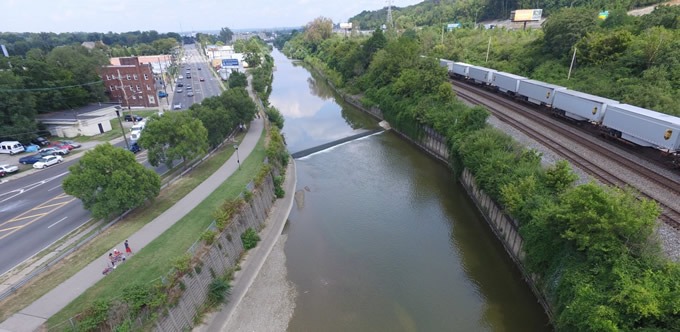
This is a guest post by David Schmitt.
Mill Creek was crucial to the development of Cincinnati, Ohio. In the city’s earliest days, it drew settlers looking for rich, fertile farmland, and water power. Mill Creek’s clear, clean water and thick riparian forests provided food, water, and timber. Its broad, flat floodplain was a perfect transportation corridor where industry grew and ultimately built Cincinnati into an industrial powerhouse, “The Queen City of the West”. Unfortunately, over time, that industrial development caused tremendous harm from direct disposal of contaminants, combined sewer overflows, and flooding caused by stormwater flowing over impervious surfaces. The Army Corps of Engineers attempted to address the flooding by channelizing large stretches of the Lower Mill Creek. This not only exacerbated some of the problems, but also cut off public access to the river.
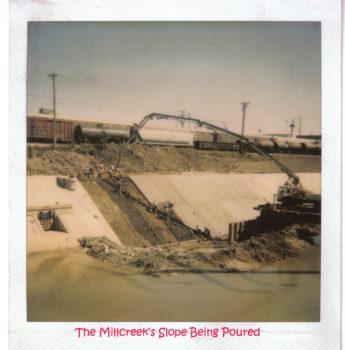 In 1996, American Rivers included Mill Creek on its list of America’s Most Endangered Rivers. The 1996 listing detailed the host of perils faced by the stream, including three Superfund sites on its banks, 31 other hazardous waste sites, and 158 Combined Sewer Overflow (CSO) and Sanitary Sewer Overflow (SSO) outflows. At that time, 24.7 of the 27 river miles violated primary contact standards for fecal coliform and E. coli. In the lower 17 miles, the standards were violated in every single sampling site and the Ohio Environmental Protection Agency (OEPA) recommended that there be no public contact with Mill Creek waters.
In 1996, American Rivers included Mill Creek on its list of America’s Most Endangered Rivers. The 1996 listing detailed the host of perils faced by the stream, including three Superfund sites on its banks, 31 other hazardous waste sites, and 158 Combined Sewer Overflow (CSO) and Sanitary Sewer Overflow (SSO) outflows. At that time, 24.7 of the 27 river miles violated primary contact standards for fecal coliform and E. coli. In the lower 17 miles, the standards were violated in every single sampling site and the Ohio Environmental Protection Agency (OEPA) recommended that there be no public contact with Mill Creek waters.
By 1997, the trend was actually worse. Two new Superfund sites had been identified, the Army Corps of Engineers was conducting a study to justify walking away from the half-finished flood control project, the OEPA proposed weakening the beneficial use designations in some stream segments, and large scale development was being considered in the northern headwater sections of the stream.
This lead American Rivers to name Mill Creek among America’s Most Endangered Rivers of 1997, calling it “one of the most severely polluted and physically degraded urban streams in the United States” and the most endangered urban river in the country.
Two local non-profits, Groundwork Cincinnati-Mill Creek (“Groundwork”) and the Mill Creek Watershed Council of Communities (‘the Watershed Council”) were formed shortly prior to the American Rivers listings and began the decades-long work of restoring the stream. The listings by American Rivers galvanized greater attention from community leaders, the public, and funding sources.
These two groups have worked tirelessly on projects benefitting both the Mill Creek itself and the surrounding communities. One of the most important steps was reminding community leaders and the public that the stream was even there. The channelization of the Mill Creek removed public access in many areas. Thick, often invasive, vegetation along its steep banks effectively screened it from sight in many others. In a long series of “urban stream adventures” state and federal legislators, mayors, county commissioners, agency heads, reporters, university professors, students of all ages, streamside property owners, sewer district directors, public works directors, environmental regulators, stream restoration consultants, fishing enthusiasts, and attorneys were taken along the stream by canoe to view it firsthand.
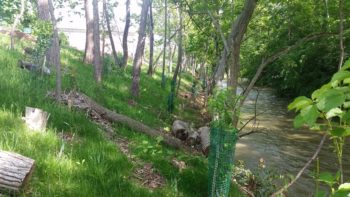
 With the help of many partners and volunteers, the two groups have completed a huge number of stream improvement projects including hike and bike trails, riparian plantings, wetland construction, dump removal, stream daylighting projects, bank reconstruction, instream habitat improvements, low head dam removal, and best management practices to control flood pulse waters. These include nine bankfull wetlands in the upper Mill Creek to hold flood pulse waters and allow sediment reduction. Throughout the watershed, smaller projects such as rain gardens, green infrastructure, and some larger parking lot runoff reduction projects are having a cumulative impact. The groups also have an extensive education program reaching over 1000 school children per year and providing job training and summer work opportunities.
With the help of many partners and volunteers, the two groups have completed a huge number of stream improvement projects including hike and bike trails, riparian plantings, wetland construction, dump removal, stream daylighting projects, bank reconstruction, instream habitat improvements, low head dam removal, and best management practices to control flood pulse waters. These include nine bankfull wetlands in the upper Mill Creek to hold flood pulse waters and allow sediment reduction. Throughout the watershed, smaller projects such as rain gardens, green infrastructure, and some larger parking lot runoff reduction projects are having a cumulative impact. The groups also have an extensive education program reaching over 1000 school children per year and providing job training and summer work opportunities.
In these region-wide efforts, the Watershed Council and Groundwork have received tremendous cooperation and collaboration from the 36 separate municipalities that call the watershed home. Increased enforcement by Ohio EPA, a federal Consent Decree ordering CSO and SSO remediation, leadership by the county-wide Metropolitan Sewer District, and popularization of these initiatives by the Watershed Council and Groundwork have wrought amazing changes throughout the watershed.
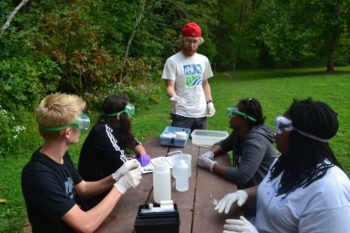 Water quality has improved dramatically as CSO and SSO outflows have been eliminated, direct disposal of pollutants have been outlawed, and remediation of stream side hazardous waste sites has been accomplished. Indeed, the most recent comprehensive water quality surveys of the Greater Cincinnati area shows that the Mill Creek’s water quality now rivals that of the Little Miami River, which is a state and national Wild and Scenic River.
Water quality has improved dramatically as CSO and SSO outflows have been eliminated, direct disposal of pollutants have been outlawed, and remediation of stream side hazardous waste sites has been accomplished. Indeed, the most recent comprehensive water quality surveys of the Greater Cincinnati area shows that the Mill Creek’s water quality now rivals that of the Little Miami River, which is a state and national Wild and Scenic River.
With the improvement in water quality and the replacement of 9 low head dams with constructed riffles has come a tremendous rebound in fish, macroinvertebrate, and other species. The diversity of fish and macroinvertebrate species in the stream have more than doubled over the last twenty years and now meet Ohio’s standards for Warm Water Habitat at most sampling points. Herons, ducks, beaver and many other long-missing species of birds and mammals have returned to its shores.
So has another species that has rarely been seen along its banks in recent years – people! Because of the efforts of Groundwork, the Watershed Council, and many partner groups and agencies, it is now possible to hike and bike on the banks of the stream, as well as to canoe and fish in the stream itself.
A large number of new stream and community improvement projects are on the verge of launching and I believe that within the next decade, the Mill Creek will complete its renaissance and become a magnet to local residents as well as tourists.
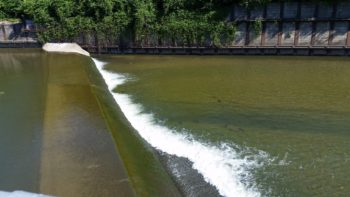 While the potential is enormous, continued effort and vigilance are required. Challenges remain in the form of stormwater runoff, effluent from Combined Sewer Overflows and Sanitary Sewer overflows, the channelization of large portions of the stream, and the socio-economic struggles of many of the communities in which we work. In an effort to magnify the impact of their work, the Watershed Council and Groundwork are discussing even greater collaboration and the potential for a merger of the two groups.
While the potential is enormous, continued effort and vigilance are required. Challenges remain in the form of stormwater runoff, effluent from Combined Sewer Overflows and Sanitary Sewer overflows, the channelization of large portions of the stream, and the socio-economic struggles of many of the communities in which we work. In an effort to magnify the impact of their work, the Watershed Council and Groundwork are discussing even greater collaboration and the potential for a merger of the two groups.
If the last 20 years are any indication, the future of the Mill Creek looks bright.
Author: David Schmitt
David Schmitt is the Executive Director of Groundwork Cincinnati-Mill Creek and the Mill Creek Watershed Council of Communities, as well as a Board member of American Rivers.

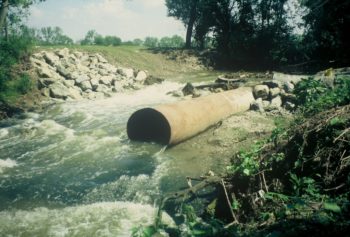
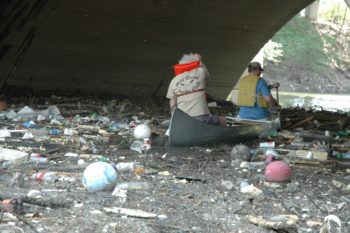
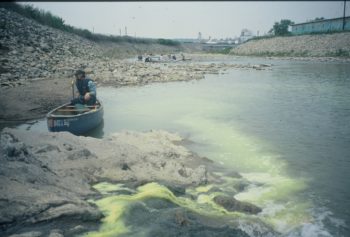

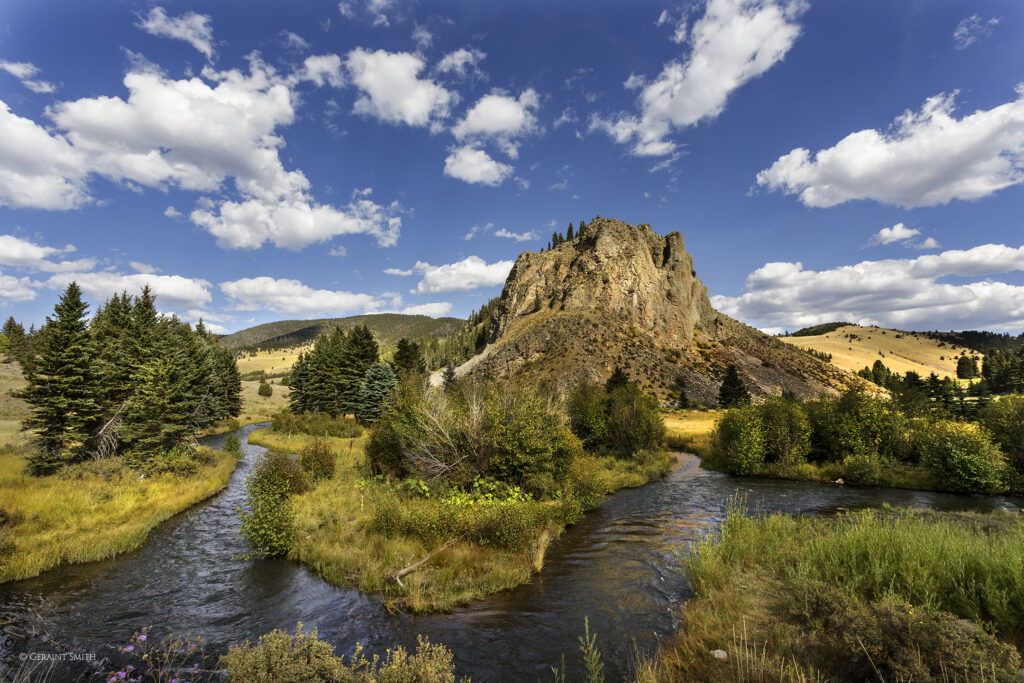
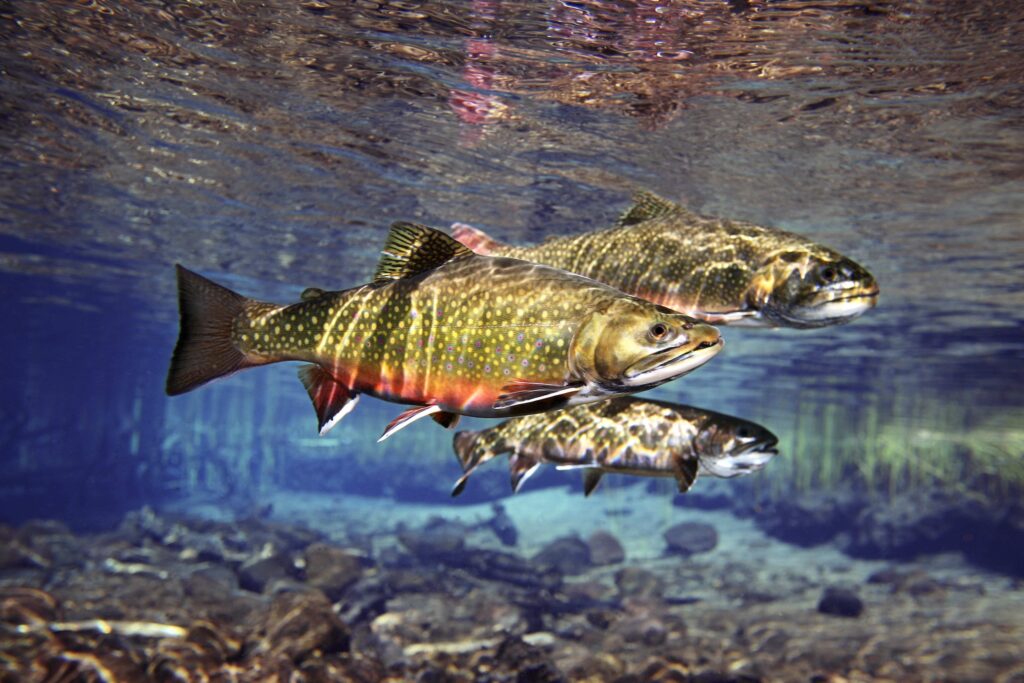
7 responses to “Urban River Revival: Celebrating Ohio’s Mill Creek”
I found this article truly inspiring. I work in Twin Falls, Idaho, and along with others in the community have started a Friends of Rock Creek community group to improve/restore a local tributary to the larger Snake River. Your work is indicative of what is possible. Thank you for sharing!
To see the Mill Creek rebound because of this work is simply amazing!
I just want to say thank you for all the efforts and hard work. I walked across the Ludlow Viaduct many times as a child in the 60’s and was terrified of the Mill Creek because it was so polluted. It looked bright green quite a few times and also smelled terrible. It makes me so happy that people cared enough to restore it. What an asset to our area.
After canoeing the Mill Creek more than 160 times, I still find it more rewarding than a scenic river. On the Mill Creek, you paddle through history. It has perfectly weird combinations of natural and built environments, where nature shows amazing powers to claw for a niche and bridges date as far back as the mid-19th century. As a water of the state, the Mill Creek is an ideal place to get outdoors and celebrate life on a resurgent urban waterway. Our stream shows many personalities en route to the Ohio River, making it a 28-mile-long playground for paddlers, nature lovers, history buffs, fishing fanatics and yokels who like to yell in big echo chambers.
I greatly appreciate the work done by both organizations over the last 2 decades, resulting in a Mill Creek that is a pleasure to walk beside with my dogs, or bike alongside, out of the Spring Grove traffic. Proof that the water quality has improved is evident in the largemouth bass I caught one evening at Salway Park in Northside. I can often see fish swimming, along with turtles and herons when walking the trail or the few times I have paddled up from the Ohio river. The “sows ear” is not yet a “silk purse,” but it is well on it’s way. Keep up the terrific work! You have made, and are continuing to make, a difference in the quality of life for many in Cincinnati!
When I was a kid in the late 40’s and early fifties the Mill creek was an open sewer. I lived a few hundred yards from it. One day it would be a deep purple the next day it would be effervescent green. It would run dry in the summer and we had many floods. In the summer when it got hot you could smell it. I never smelled anything like it until I was on Okinawa with the Marines . In Okinawa they had what they called benjo ditches that were on the sides of streets . They were covered with slabs of concreat . They were open sewers !
Clarence Hall
We’re on our way to a fully restored Mill Creek, and this is the group that will make it happen! Absolutely great work being done by Groundwork/Watershed Council.